 The sales landscape has radically changed.
The sales landscape has radically changed.
Customers have the power.
Customers make the choices.
Customers drive the engine of interaction.
Customers decide how much attention to give you.
THE QUESTION IS: Has your organization adjusted to these new realities yet?
Today we’re going to explore six epiphanies to help you make sales, make money and make a difference:1. Gratitude trumps desire. Sometimes, customers don’t buy because they want it – they buy because they want to say thank you. Instead of the psychological default of ownership, the cognitive processes of gratitude drives the sale.
Take Radiohead, for example. Their album In Rainbows was released independently through their own website. No labels. No brokers. No stores. And fans were invited to pay as little or as much as they wanted for the record.
Personally, I gave them fifty bucks.
That’s four times the amount of what I’d normally pay for an album. And why did I do it? To say thank you. Because I love Radiohead’s music that much. Because their art has been such an important part of my life. And because I literally want to give them more of my money to keep them contributing to the soundtrack of my life. Are your customers thanking you?
2. Listening is the new selling. My doctor, Steve, once told me that there are two levels of listening. “When I listen with my ears, the patients provide their own diagnosis. But when I listen with my heart, the patients provide their own cure.”
What body part are you listening with? And when you do, are your customers telling you how to solve their pervasive, expensive, urgent and real problems?
Take social media, for example. In my opinion, it’s not a mechanism for closing sales – it’s a platform for listening to why people buy. I learned this lesson last week when a group of my audience members asked me for a copy of my slide deck.
“Really? You actually want that?” I thought.
“Absolutely!” they said. “You have the best slide show I’ve ever seen.”
Naturally, I listened to my customers. I uploaded my presentation onto SlideShare. And dozens of audience members shared their experience with their friends.
Who knew? Maybe I’ll start doing this more often. How many sales are you missing because you’re listening on the wrong level?
3. Companies that teach, win. Seth Godin wrote, “The more the people you sell to that are more informed, inquisitive, free-thinking and alert they are, the better you will do. And the competition will have hard time responding with a dumbness offensive.”
Lesson learned: Instead of handling, managing or dealing with customers, try educating them. Stop thinking of them as people who pay your salary and start attending to them as pupils who enrolled in your class.
At the end of your transactions, instead of asking, “Is there anything more I can do for you?” or “How else may I be of service to you?” start asking your customers, “What else can I help you learn?”
This question is unexpected, thought provoking and revolves around your ability to educate your customers. How are you making your customers smarter?
4. Sell to your audience; don’t sell your audience to others. Most customers have been advertised to, marketed to, duped, fooled, conned, scammed, sold and screwed over too many times – and they’re tired of.
They’re not your little targets anymore. And approaching the sale in such a way degrades your model. Take blogs, for example. Readers don’t want to have to barrel through banner ads, pop-ups, sponsored links and other interruptions, just to get to your content.
Instead of making customers feel sponsored – make them feel special. Create products they actually want and sell to them directly. Nothing has more wallet-opening power than mattering. What do you share that people (actually) give a damn about?
5. Stop pitching and start offering. Pitching, according to Dave Barry, is a Hollywood term for, “Trying to sell your project by acting like a low-cost prostitute.”
That’s no way to sell. Not in this decade. Remember: You’re starting with a negative balance with most customers. This puts you in a deficit position. If you want to lower the threat level of a sales conversation, trying offering instead.
Rob Bell addressed this in his groundbreaking book, Velvet Elvis. “I am far more interested in jumping than I am in arguing about whose trampoline is better. You rarely defend the things you love. You enjoy them and tell others about them and invite others to enjoy them with you.”
Sell like that. Are you pitching people on the springs or offering them a change jump with you?
6. We don’t trust what people say about themselves. We trust what the web says about them. We trust what their current customers say about them. And we trust what our closest friends say about them.
But we definitely don’t trust them. Why? Because nobody wants to be the first person to trust somebody. It’s too risky. That means your challenge is to help customers, employees, member – or whomever you serve – to verify your trust via predictability.
That’s where it comes from. People trust people who are predictable. Period.
Fortunately, that’s all branding is: An expectation. Which means it’s your job to prove customers right. To confirm their suspicions about the value you deliver and the values you stand for. How predictable is the value your company delivers?
ULTIMATELY: When the sales landscape changes, your sales approach needs to change with it.
Remember these epiphanies or risk being left behind.
LET ME ASK YA THIS…
What sales epiphanies have you had recently?
LET ME SUGGEST THIS…
For the list called, “15 Ways to Out Learn Your Competitors,” send an email to me, and you win the list for free!
* * * *
Scott Ginsberg
That Guy with the Nametag
Author, Speaker, Entrepreneur, Mentor
[email protected]
 Never the same speech twice.
Never the same speech twice.
Always about approachability.
Watch The Nametag Guy in action here!

 The other night I received an instant message from one of my readers.
The other night I received an instant message from one of my readers. 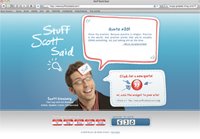 Who’s quoting YOU?
Who’s quoting YOU? Woody Allen is famous for saying, “Eighty percent of life is showing up.”
Woody Allen is famous for saying, “Eighty percent of life is showing up.”
 Every speech I give is two speeches:
Every speech I give is two speeches: 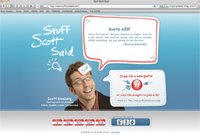 Who’s quoting YOU?
Who’s quoting YOU? “Ideas are free; execution is priceless.”
“Ideas are free; execution is priceless.”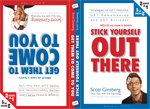 The world’s FIRST two-in-one, flip-flop book!
The world’s FIRST two-in-one, flip-flop book! “I am large. I contain multitudes.”
“I am large. I contain multitudes.”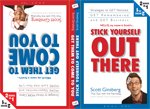 The world’s FIRST two-in-one, flip-flop book!
The world’s FIRST two-in-one, flip-flop book! I’m sick and tired of people saying, “This, too, shall pass.”
I’m sick and tired of people saying, “This, too, shall pass.” Know your customer.
Know your customer. The world’s FIRST two-in-one, flip-flop book!
The world’s FIRST two-in-one, flip-flop book! Last week I wrote a
Last week I wrote a  “Damn it! Now why didn’t I think of that?”
“Damn it! Now why didn’t I think of that?”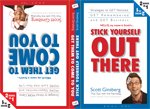 The world’s FIRST two-in-one, flip-flop book!
The world’s FIRST two-in-one, flip-flop book!